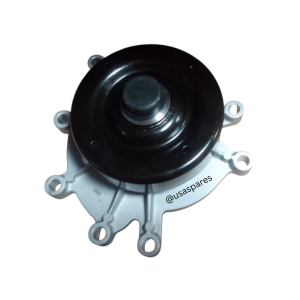Description
Jeep Grand Cherokee 4.0 WJ Crankshaft Sensor – Essential for Engine Timing & Performance
The crankshaft sensor in the Jeep Grand Cherokee 4.0 WJ is a crucial component of the engine management system. This sensor detects the position and rotational speed of the crankshaft, providing real-time data to the engine control unit (ECU). The ECU uses this data to manage engine timing, fuel injection, and ignition, ensuring the engine operates efficiently and performs optimally. Accurate crankshaft positioning is essential for smooth engine operation, fuel efficiency, and preventing engine damage.
A malfunctioning or faulty crankshaft sensor can lead to a variety of engine performance issues. If the sensor fails to deliver accurate data, the ECU cannot properly synchronize the timing of fuel injection and ignition, which can result in rough idling, engine misfires, or even engine stalling. Additionally, a faulty crankshaft sensor can prevent the engine from starting altogether. Often, a malfunctioning sensor will trigger the check engine light, alerting the driver to a problem that needs to be addressed.
Replacing the Jeep Grand Cherokee 4.0 WJ crankshaft sensor with a high-quality OEM or aftermarket part is essential for restoring proper engine timing and ensuring the engine runs smoothly. By replacing a faulty crankshaft sensor early, you can prevent more severe issues, including engine misfires, reduced performance, and costly repairs down the line.
Key Features of Jeep Grand Cherokee 4.0 WJ Crankshaft Sensor:
- Precise Crankshaft Position Monitoring: Delivers accurate data to the ECU for optimal engine timing and ignition.
- Durable Construction: Built to withstand harsh engine environments and high temperatures.
- OEM Fit & Compatibility: Designed as a direct replacement for the original sensor, ensuring easy installation and reliable performance.
- Improved Engine Efficiency: Helps optimize fuel injection and ignition timing for better engine performance and fuel economy.
- Prevents Engine Damage: Ensures accurate synchronization of the engine components, avoiding misfires or engine damage.
Signs of a Failing Crankshaft Sensor:
- Engine Misfires or Stalling: Inaccurate sensor readings can cause engine misfires, stalling, or difficulty starting.
- Check Engine Light: A malfunctioning crankshaft sensor will trigger the check engine light, alerting the driver to the problem.
- Difficulty Starting the Engine: A faulty sensor may prevent the engine from starting or lead to long cranking times.
- Rough Idling or Poor Acceleration: A malfunctioning sensor can cause the engine to run roughly or experience poor acceleration.
- Erratic RPM: The engine may display inconsistent RPMs, leading to poor performance and inefficient fuel consumption.
Why Replace a Faulty Crankshaft Sensor?
A faulty crankshaft sensor can lead to various engine issues, including poor fuel economy, rough idling, and engine misfires. If not addressed, these issues can escalate and lead to more serious engine damage. Replacing the faulty sensor ensures accurate data is sent to the ECU, allowing the engine to perform efficiently and maintain optimal performance. Replacing a malfunctioning sensor with a high-quality replacement part helps prevent unnecessary repairs and ensures the long-term reliability of the engine.
Installation & Maintenance Tips:
- Use OEM or Quality Aftermarket Sensors: Ensure compatibility and reliability with high-quality replacement parts.
- Inspect Wiring and Connectors: Check for damaged wiring, corrosion, or poor connections that may affect sensor performance.
- Perform a Diagnostic Check: Use an OBD-II scanner to identify any error codes related to the crankshaft sensor.
- Clear Fault Codes: After replacing the sensor, clear any stored fault codes from the ECU to ensure proper system functioning.








